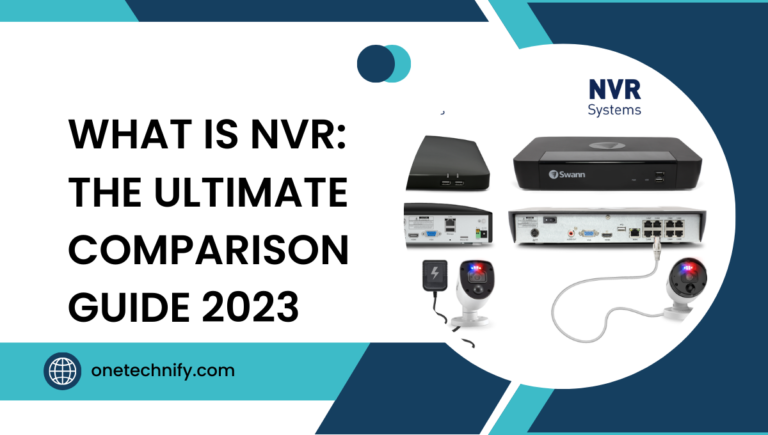VSWR, or Voltage Standing Wave Ratio, is a crucial concept in the field of telecommunications that measures the ratio of the maximum and minimum voltages on a line impedance along the wavelength of waves. The reflection coefficient measures the efficiency of power transfer in a transmission line by analyzing the impedance match between devices. It provides insights into the voltage vector, watts, and wavelength involved in the process.
A high Voltage Standing Wave Ratio (VSWR) indicates an impedance mismatch, which can result in signal loss, reduced system performance, interference, antenna issues, reflection coefficient problems, and voltage fluctuation. Understanding VSWR, or Voltage Standing Wave Ratio, is essential for optimizing the efficiency and reliability of communication systems that use antennas to transmit and receive waves. VSWR is determined by the reflection coefficient, which is influenced by the load impedance.

Importance of Understanding VSWR in Various Industries
In today’s interconnected world, efficient and reliable communication is crucial across various industries. This is especially important when it comes to antennas and RF communication. Ensuring that the antennas meet the necessary specs and are compatible with the ZL technology is essential for optimal performance. One important factor that plays a significant role in ensuring smooth communication is VSWR (Voltage Standing Wave Ratio) in RF (radio frequency) antennas.
VSWR measures the efficiency of power transfer between the transmitter and the antenna, by quantifying the reflection coefficient of waves. Let’s explore why understanding VSWR, or voltage standing wave ratio, is essential in different sectors that deal with waves, antennas, RF, or radio frequency. VSWR helps measure the reflection coefficient of waves in order to optimize antenna performance.
Telecom Industry Relies on Low VSWR for Efficient Signal Transmission
In the telecom industry, where uninterrupted signal transmission is paramount, low VSWR values are vital for antenna performance. Standing waves and reflection coefficients play a crucial role in maintaining the desired impedance (z0) for efficient signal propagation. High VSWR, or voltage standing wave ratio, can lead to signal loss, reduced coverage, and poor call quality. This occurs due to the reflection coefficient of the antenna and its impedance, known as z0. By maintaining low VSWR levels, telecom companies can provide better network performance and improved user experience. This can be achieved by optimizing the antenna’s reflection coefficient and ensuring the impedance, z0, is properly matched.
Aerospace Industry Uses VSWR to Ensure Reliable Communication Systems
Reliable communication systems, including antennas, are critical for safe and efficient operations. These systems rely on waves to transmit and receive signals. However, it is important to monitor the VSWR of the antenna, as an increase in VSWR can negatively impact communication quality. In particular, the ZL of the antenna can be affected when VSWR increases. High VSWR can cause signal reflections and interference, leading to compromised communication between aircraft and control towers.
This occurs when the antenna does not match the impedance of the transmission line (ZL) or the characteristic impedance of the system (Z0), resulting in waves bouncing back and forth. By monitoring and optimizing VSWR levels, the aerospace industry ensures seamless data exchange and enhances overall safety. This is achieved by carefully monitoring the reflection coefficient (zL) of the antenna and ensuring it is within the acceptable range for the characteristic impedance (Zo) of the system.
Medical Field Utilizes VSWR Measurements in Diagnostic Equipment
Within the medical field, diagnostic equipment heavily relies on accurate measurements of antenna reflection coefficient for precise diagnoses of zo and zl. In devices such as MRI scanners or ultrasound machines, high VSWR values can result in distorted images or inaccurate readings due to issues with the antenna’s reflection coefficient (zl) and the characteristic impedance (zo). By understanding and controlling VSWR levels in medical equipment, healthcare professionals can obtain more accurate diagnostic information.
This is especially important when it comes to the performance of the antenna, as it plays a crucial role in transmitting and receiving signals. The VSWR, or Voltage Standing Wave Ratio, measures the efficiency of the antenna by comparing the amount of power that is transmitted versus the amount of power that is reflected back. By ensuring that the VSWR is kept within acceptable limits, healthcare professionals can optimize the performance of the antenna and minimize signal loss. This, in turn, leads to
Broadcasting Industry Requires Low VSWR for High-Quality Audio and Video
For broadcasters aiming to deliver high-quality audio and video content to their audiences, low VSWR, antenna, ZL, and Zo are crucial. High standing wave ratios, also known as VSWR specs, can introduce signal distortions that degrade the audiovisual experience for viewers. These distortions can be caused by issues with the antenna, such as impedance mismatches between the antenna (ZL) and the transmission line (ZO). By minimizing VSWR values in broadcasting equipment like antennas or transmitters, media organizations ensure optimal signal quality throughout transmission. ZL and ZO are crucial for maintaining high-quality signals in broadcasting equipment.
Understanding the importance of maintaining low VWSRs across industries highlights how the zl parameter directly impacts communication reliability and performance. The zl parameter is crucial for optimizing antenna performance and ensuring reliable communication. Whether it’s in telecom, aerospace, medical, or broadcasting applications, monitoring and optimizing VSWR levels are essential for achieving seamless connectivity and efficient operations. This is especially true when it comes to antenna performance, as the impedance matching between the antenna (Zl) and the transmission line (Zo) plays a crucial role in minimizing signal reflections and maximizing signal transfer.
VSWR Formula: Calculating Impedance Mismatches
To determine the level of impedance mismatch in a transmission line, we use a formula known as VSWR (Voltage Standing Wave Ratio) which is essential for analyzing the performance of an antenna and ensuring optimal transfer of power between the antenna and the transmission line. This formula helps us understand the extent to which the source impedance and load impedance for the antenna are mismatched. By calculating the maximum voltage and minimum voltage along the transmission line, we can obtain a numerical value that indicates the magnitude of this mismatch. This value is crucial for understanding the impact of zl and zo on the system.
A perfect match between source and load impedances results in a VSWR of 1:1. This means that the source impedance (zl) and the load impedance (zo) are perfectly aligned. In this scenario, there is no reflection or loss of power along the transmission line. The zl and zo are unaffected. However, higher zo values indicate greater mismatches, leading to signal degradation and potential interference issues.
The VSWR formula is relatively straightforward. It involves dividing the maximum zo voltage by the minimum zo voltage along the transmission line. The resulting ratio provides valuable insight into how well impedances are matched. A lower VSWR signifies better impedance matching, while a higher VSWR suggests significant mismatches.
Understanding and utilizing this formula can help identify areas where there may be impedance discontinuities or mismatches in a system. By analyzing VSWR measurements, engineers can pinpoint potential sources of signal degradation and take appropriate corrective measures to improve performance.
Explaining the Reflection Coefficient in VSWR Formula
The reflection coefficient plays a crucial role in understanding the Voltage Standing Wave Ratio (VSWR) formula. It quantifies how much energy is reflected back due to impedance mismatch at an interface point. This coefficient represents the ratio between the reflected voltage and incident voltage.
Higher reflection coefficients result in increased levels of signal loss and ultimately lead to higher VSWR values. By understanding this coefficient, we can diagnose transmission line problems more effectively.
Reflection Coefficient: Quantifying Impedance Mismatch
The reflection coefficient is a measure of how well an electrical load matches the characteristic impedance of a transmission line. It determines the extent to which energy is reflected back towards its source instead of being transmitted forward.
The Impact of Reflections on Signal Loss
When there is a high reflection coefficient, it indicates that there is a significant impedance mismatch between the load and transmission line. This leads to more energy being reflected back, resulting in signal loss. Conversely, when there is a low reflection coefficient, it signifies that there is minimal or no impedance mismatch, resulting in less energy being reflected back.
Importance of Understanding the Reflection Coefficient
Understanding and analyzing the reflection coefficient helps us identify and troubleshoot issues within a transmission line. By measuring and evaluating this coefficient, we can determine if there are any impedance mismatches or faults that may be causing signal degradation or attenuation.
VSWR Formula: Using Forward & Reflected Powers
In the world of RF engineering, understanding the Voltage Standing Wave Ratio (VSWR) is crucial for optimizing power transfer and minimizing signal loss. One key aspect of calculating VSWR involves measuring both forward power and reflected power. Let’s delve into how these powers are defined and how they are used in the VSWR formula.
Forward Power: Power Delivered from Source to Load
Forward power refers to the amount of power delivered from a source to a load through a transmission line. It represents the desired power that we want to transfer efficiently without any losses. The forward power is typically measured at the output of the transmitter or generator.
Reflected Power: Power Bouncing Back
On the other hand, reflected power is the portion of power that bounces back due to impedance mismatches or discontinuities along the transmission line. These reflections occur when there is a mismatch between the characteristic impedance of the transmission line and either the source or load impedance.
To calculate VSWR, we need to measure both forward and reflected powers accurately. By using an RF wattmeter or directional coupler, we can determine these values precisely.
The VSWR Formula: Evaluating Efficiency
The VSWR formula allows us to determine the magnitude of reflected waves based on measurements of forward and reflected powers. It is calculated using this simple equation:
(Vf + VR) / (Vf – VR)
Where:
- Vf represents forward voltage
- VR represents reverse voltage (reflected voltage)
By plugging in these values into our formula, we can obtain a numerical value representing VSWR. This value helps us assess how well our system is performing in terms of efficiency and signal integrity.
Understanding and utilizing this formula enables engineers to optimize their systems by identifying any impedance mismatches or issues causing excessive reflection. By minimizing reflections through proper matching techniques, we can achieve better power transfer and signal quality.
Relationship Between Mismatch Loss and VSWR
Mismatch loss, also known as return loss, refers to the power lost due to impedance mismatches in a system. It is an important factor to consider when evaluating the performance of a system. One key aspect of understanding mismatch loss is its relationship with Voltage Standing Wave Ratio (VSWR).
VSWR measures how well an antenna or transmission line matches the source or load. It shows how much reflection happens at these points. The formula compares the highest and lowest voltage along the line. Higher VSWR means more mismatch losses. This means more power goes back to the source instead of being transmitted effectively. Knowing this helps us understand how impedance mismatches affect system performance. High mismatch losses can cause signal problems, lower efficiency, and potentially damage equipment. To improve signal quality and reduce mismatch losses, we need to make sure components match properly. This can be done through careful design and techniques like using matching networks or adjusting antenna lengths.
Knowing this helps us understand how impedance mismatches affect system performance. High mismatch losses can cause signal problems, lower efficiency, and potentially damage equipment. To improve signal quality and reduce mismatch losses, we need to make sure components match properly. This can be done through careful design and techniques like using matching networks or adjusting antenna lengths.
Monitoring VSWR and Maximizing System Efficiency
Regular monitoring of VSWR is crucial to ensure the early detection of potential issues in your system. High VSWR can lead to overheating, equipment damage, and reduced system efficiency.
To measure and monitor VSWR values, there are techniques that can be employed. One such technique is using directional couplers or reflectometers. These devices help in accurately measuring the voltage standing wave ratio (VSWR) of your system.
By maintaining low VSWR levels, you can maximize power transfer and minimize signal loss. This is essential for efficient operation of your system.
Key Points:
- Regular monitoring helps detect potential issues early on.
- High VSWR can cause damage and reduce efficiency.
- Directional couplers and reflectometers are useful tools for measurement.
- Low VSWR levels optimize power transfer and minimize signal loss.
Monitoring the VSWR of your system allows you to identify any voltage fluctuations or variations along the transmission line or antenna. It’s like keeping an eye on water waves hitting a breakwater – if they’re too high or irregular, it could cause damage.
The goal is to achieve an ideal system where the maximum voltage at any point along the transmission line matches the minimum voltage at another point. This ensures smooth power transmission without any reflections or loss.
In radio systems, high VSWR can result in poor transmission quality, reduced coverage area, and even damage to expensive equipment like amplifiers or transmitters. By regularly monitoring and maintaining low VSWR levels, you can optimize system performance while avoiding costly repairs.
Remember, keeping an eye on your system’s health through regular VSWR measurements is key to maximizing its efficiency!

Understanding VSWR for Optimal Performance
Now that you have a solid understanding of VSWR and the formula used to calculate it, you are well-equipped to optimize the performance of your systems. By monitoring VSWR and minimizing impedance mismatches, you can ensure maximum efficiency and minimize signal loss. Just like how a smooth road allows your car to travel faster with less resistance, a low VSWR allows your signals to flow smoothly through your system, resulting in improved performance.
To make the most out of your knowledge about VSWR, take proactive steps in monitoring and maintaining optimal levels. Regularly check for any impedance mismatches or reflections that could lead to increased VSWR. By doing so, you can identify potential issues early on and address them before they impact the overall efficiency of your system. Remember, achieving optimal performance is not a one-time task but an ongoing process that requires vigilance and attention.
FAQs
What causes high VSWR?
High VSWR is typically caused by impedance mismatches within a transmission line or antenna system. This can occur due to factors such as incorrect cable lengths, improper termination or connectors, faulty components, or environmental conditions like temperature changes.
How does high VSWR affect system performance?
High VSWR leads to increased power loss and reduced signal quality within a system. It can result in decreased range, lower data transfer rates, reduced sensitivity or accuracy in measurements, and even damage to sensitive components due to excessive reflected power.
Can I measure VSWR without specialized equipment?
Yes, there are several methods for measuring VSWR using basic equipment like an SWR meter or vector network analyzer (VNA). These tools allow you to determine the level of mismatch between transmitted and reflected signals.
Are there any industry-specific standards for acceptable VSWR levels?
Yes, different industries may have specific standards for acceptable levels of VSWR depending on the application. For example, in telecommunications, a VSWR of 1.5:1 or lower is often desired, while in other industries like radio astronomy, even lower levels may be required.
How can I minimize impedance mismatches and improve VSWR?
To minimize impedance mismatches and improve VSWR, ensure proper cable lengths, use high-quality connectors and components, regularly inspect for damage or wear, and follow industry best practices for installation and maintenance. Consulting with experts in the field can provide valuable insights into optimizing your specific system’s performance.






